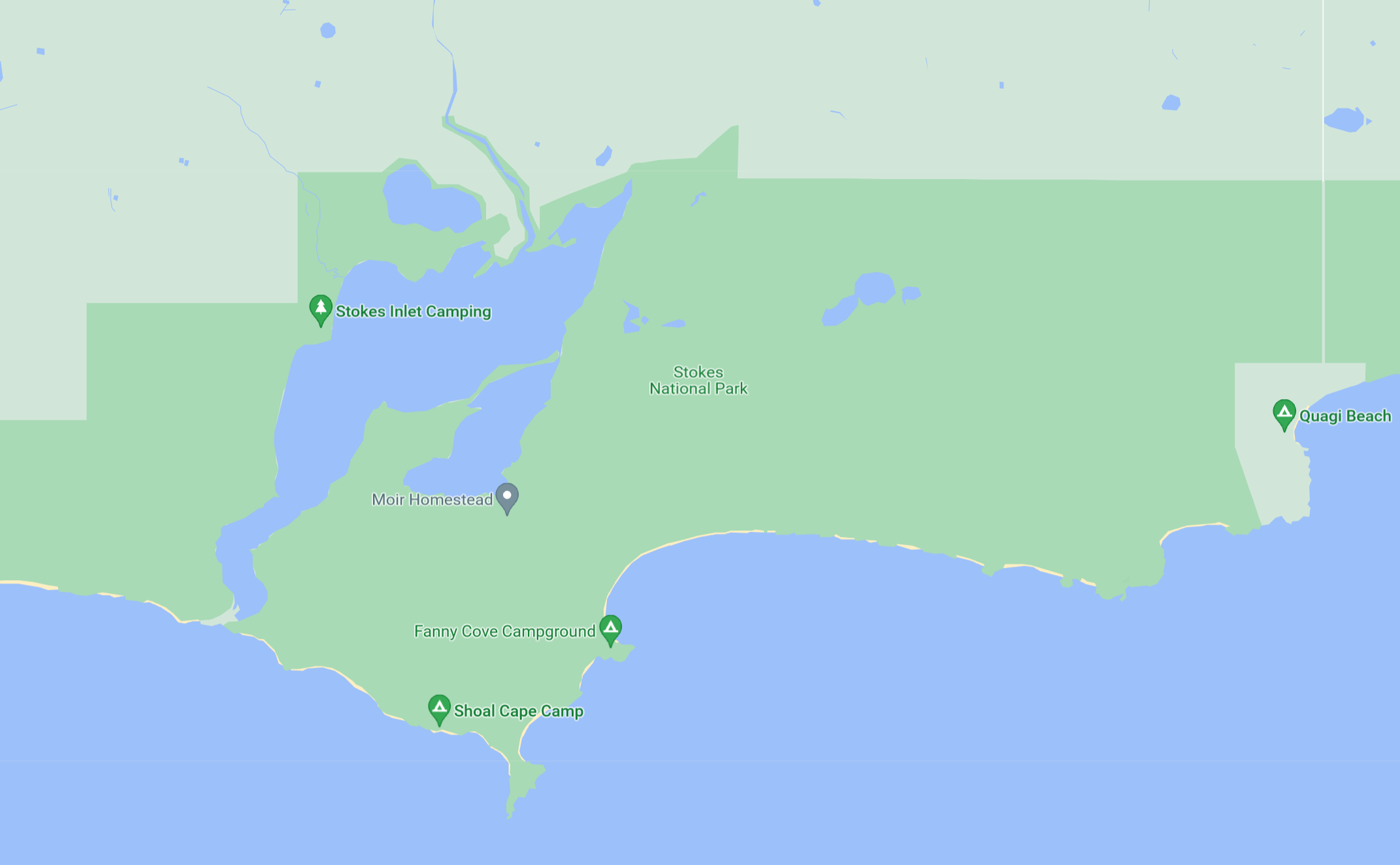Stokes
The 14km inlet features long beaches and rocky headlands backed by sand dunes. Dense bush and shady paperbark trees fringe the water’s edge. Stokes Inlet is the largest of a number of estuaries around Esperance, and the only one with reasonably deep water.
Wild places, quiet places
Day visitors and bushwalkers can enjoy Stokes Inlet, Skippy Rock, Shoal Cape, the Moir Homestead Ruins and Fanny Cove. You can walk to the Estuary Mouth if water levels allow. Abundant bird life frequents the inlet, its shores and associated lakes.
‘Breaming’ with fish
The inlet is also popular for fishing and canoeing, and it is possible to launch small boats from the campsites. Be aware, however, that although the area of water looks large there are extensive areas of shallows and rocks. Normal fisheries regulations apply in national parks. Species caught include black bream, Australian salmon, King George whiting and mullet.
Tips for campers
Visitors can camp at Benwenerup (suitable for two-wheel drive), Skippy Rock, Shoal Cape and Fanny Cove (four-wheel drive only). You must bring enough drinking water for your needs as there is none available in the park. All rubbish must be carried out as there are no bins.
Playing safe
- Please leave pets at home. Fox baits are routinely laid in the area. You may not light fires at any time of the year.
Tiger snakes are often found in areas fringing the estuary.
The main entrance is from Stokes Inlet Road, which is gravel and provides easy access for two-wheel drive vehicles and large caravans. The remainder of the park is four-wheel drive only.
We recognise and acknowledge Aboriginal people as the Traditional custodians of Stokes National Park.

No comments yet. Login to start a new discussion Start a new discussion